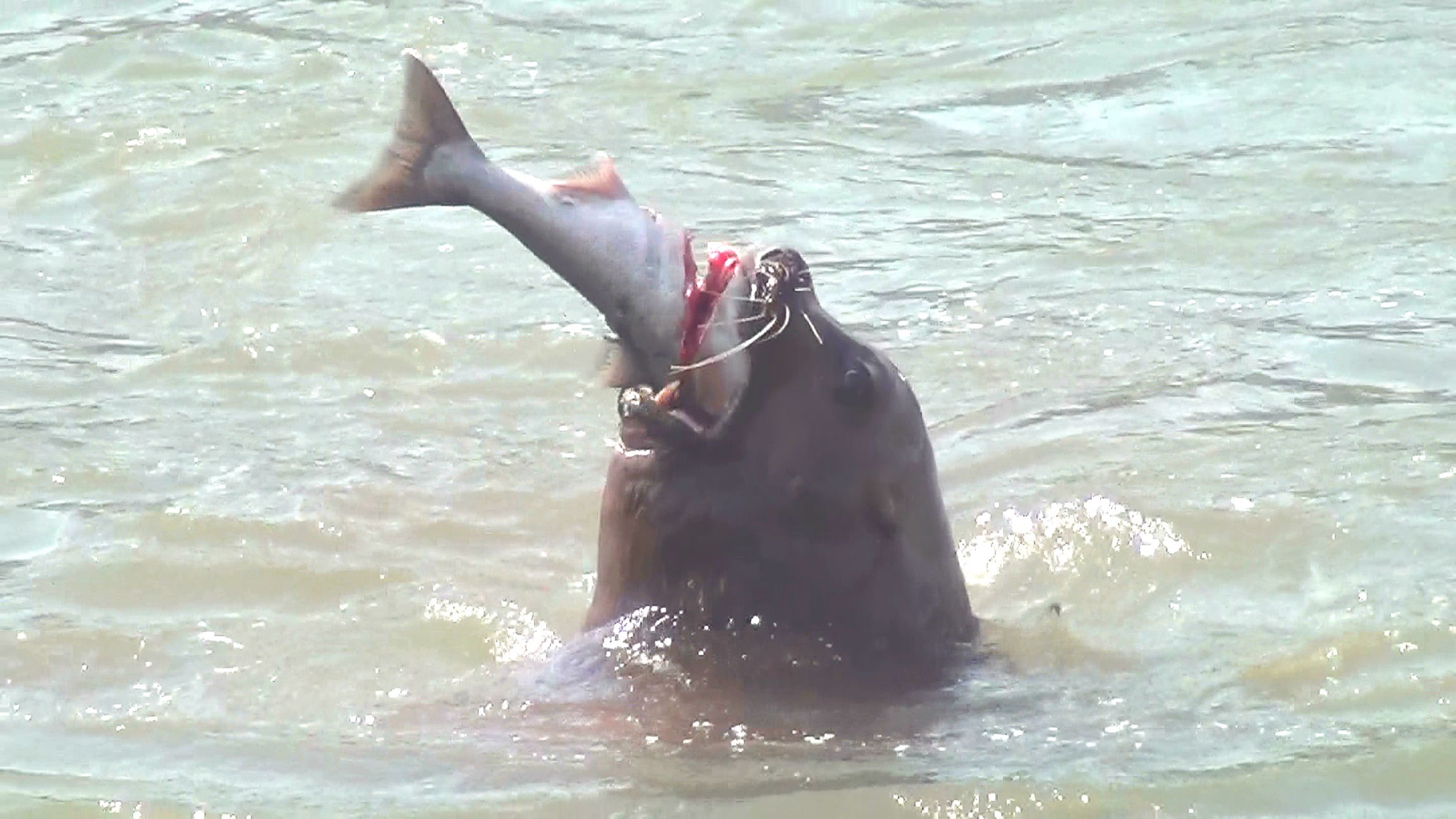Salmon Smorgasbord
NOAA Fisheries research indicates that after accounting for harvest, in some years as many as 45 percent of the salmon tagged in the estuary disappear before reaching Bonneville Dam.
- July 14, 2016
- John Harrison

In 2010, researchers for NOAA Fisheries, the federal agency that oversees the Endangered Species Act for Columbia River Basin salmon and steelhead, began a research project to better understand what happens to the fish in the 140 miles between the ocean and Bonneville Dam when they return every spring to spawn. The number of marine mammals in the estuary, predators of adult salmon, was concerning and researchers wondered about the potential impacts.
NOAA and state fish managers in Oregon and Washington had anecdotal evidence that fish were disappearing before reaching Bonneville Dam. It wasn’t clear why, but there was suspicion that marine mammals – sea lions and harbor seals – might be responsible for some portion of the losses.
Today, with the project in its seventh year, researchers have captured and tagged more than 2,200 spring Chinook salmon and followed their migration progress from the estuary near Astoria, Oregon, up the river. Survival has varied over the years, but after accounting for harvest, annual survival has ranged from 55 to 90 percent, meaning that as many as 45 percent of the upriver fish tagged in the estuary did not arrive at Bonneville Dam during some years. Genetic testing shows that about 70 percent of the tagged fish are destined for spawning areas and hatcheries in tributaries of the Snake River and the middle and upper Columbia – including threatened species.
Coincidentally, since 2010, the population of sea lions and harbor seals in the estuary has exploded.
“Pinnipeds are probably the primary cause of this mortality, but there are possible other causes,” the lead researcher, Dr. Michelle Rub, reported to the Council recently after completion of the current year’s work. Those include fish turning into creeks in the lower Columbia to spawn, fish deaths from disease or injury, or even learned behavior – the same seals and sea lions returning year after year to the annual Columbia River salmon feast (most of the sea lions arrive in the spring and leave by summer).
But none of these is as strong a cause as predation by marine mammals, Dr. Rub said.
For example, salmon mortality increases as the population of marine mammals increases each spring. But that hasn’t been the case every year. In 2015, predation declined even with a high population of marine mammals, Rub said.
Rub said she hopes funding will be available to continue the research in future springs, as some of the recent results add to the mystery. For example, radio telemetry, which researchers began using this year, suggests that less than half of the animals follow fish farther upriver than the estuary. Installing radio tags on both salmon and marine mammals will show where predator and prey are in the river at the same time – valuable information for fishery managers.
More data from the research also will help refine models that are being developed to improve survival predictions.


